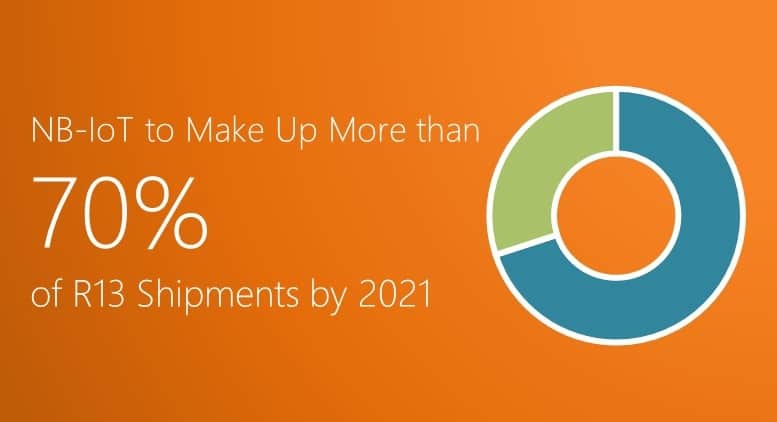ABI Research finds the new 3GPP IoT standards will account for more than 50% of cellular IoT radio node unit shipments by 2021 with NB-IoT consuming more than 70% of Release 13 shipments and more than one third of all cellular IoT shipments - a value which is greater than legacy M2M or the current Cat-1 standard.
"While some in the industry view the new 3GPP standards as competitors to the current non-3GPP LPWA technologies and predict their demise, we believe that NB-IoT will complement LPWA," says Nick Marshall, Research Director at ABI Research. "But it is true that out of the 15 LPWA technologies we profiled, some were designed for use cases that are unsuitable for NB-IoT, such as where downlink data is not required."
The 3GPP Release recently finalized three, new cellular LTE-based IoT standards - Cat-M1, NB-IoT, and EC-GSM - that offer a cellular alternative to proprietary unlicensed Low-Power Wide-Area Network (LPWA) technologies like Ingenu, LoRa, and SIGFOX. The standards make it easy to configure an LTE network through a simple software upgrade to the existing LTE radio interface, which is why ABI Research expects rapid growth and worldwide deployment of NB-IoT to start in 2017.
Pre-standard NB-IoT pilots and trials are already taking place, or are about to, with operators such as AT&T, China Mobile, China Unicom, Deutsche Telekom, Orange, Telefonica, and Vodafone working with equipment from vendors including Ericsson, Huawei, Intel, Nokia, and Qualcomm.
"Ultimately, the choice of IoT radio link involves trade-offs between conflicting features, which often involve capacity, licensed versus unlicensed operation, range, reliability, battery life, cost and proprietary versus standards-based schemes," concludes Marshall. "NB-IoT stands ready to unlock the full potential of IoT thanks to its high link budget for maximum coverage extension, low cost, and ability to reuse existing LTE networks with carrier grade reliability and security."




















